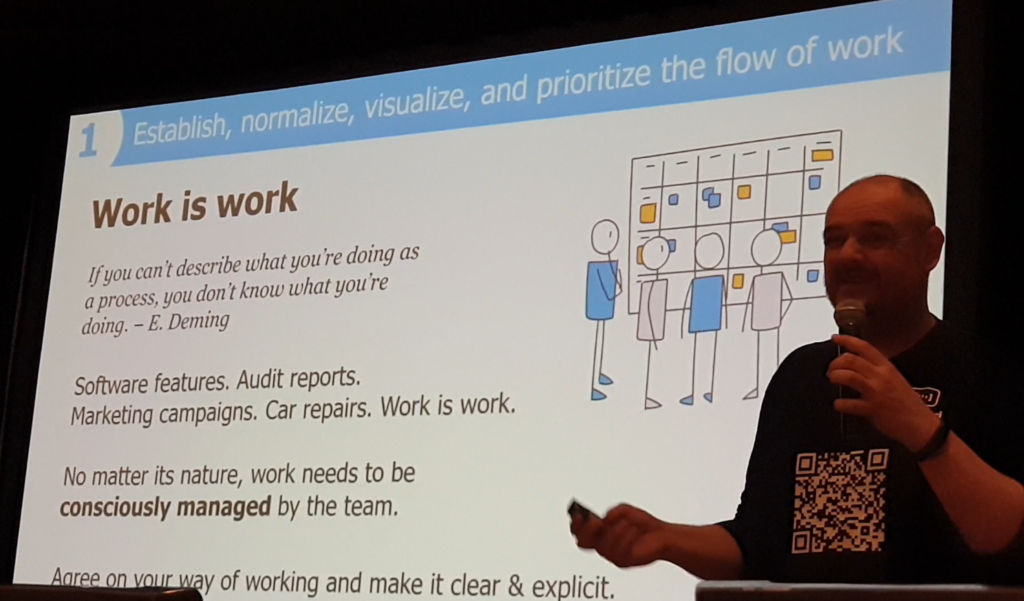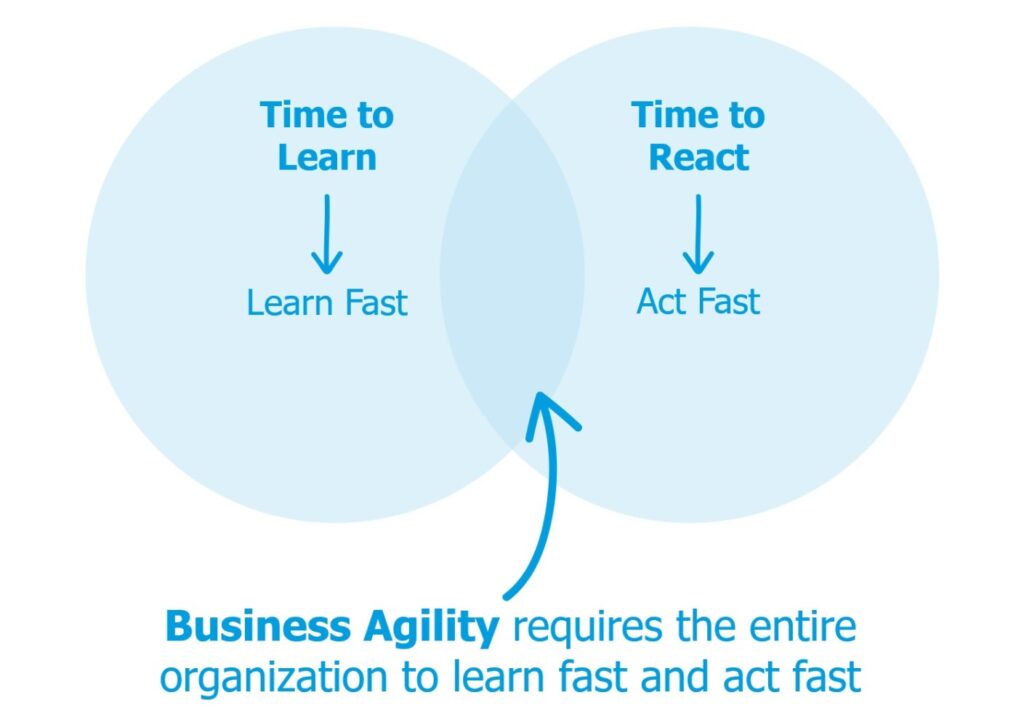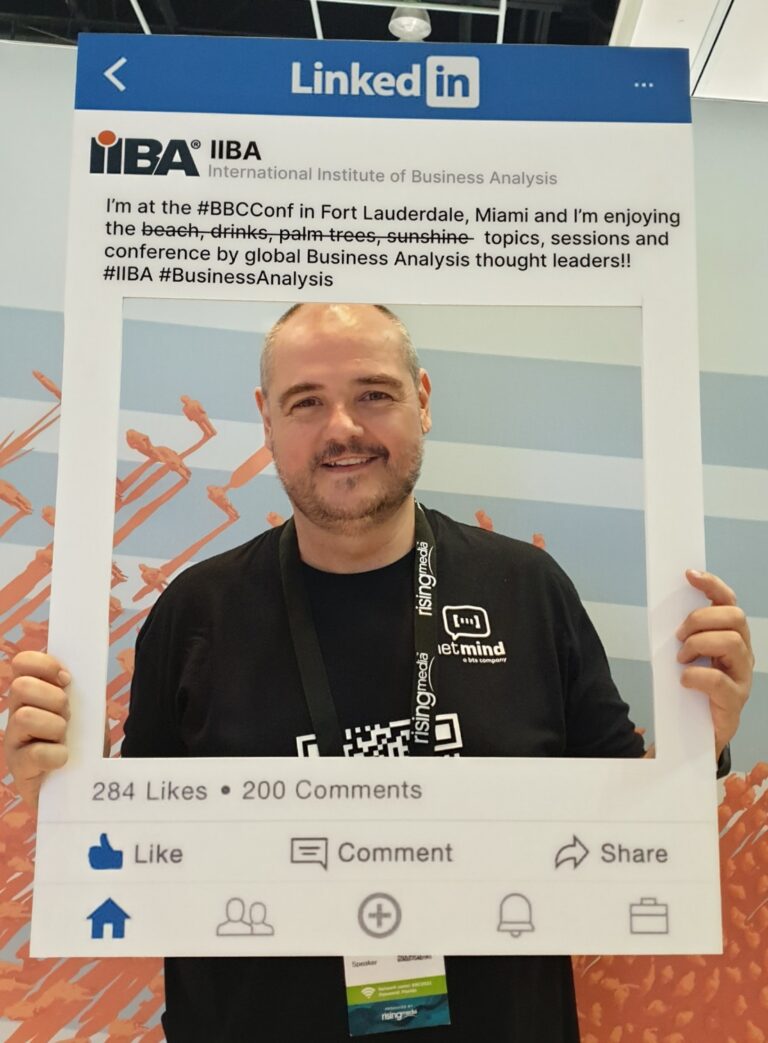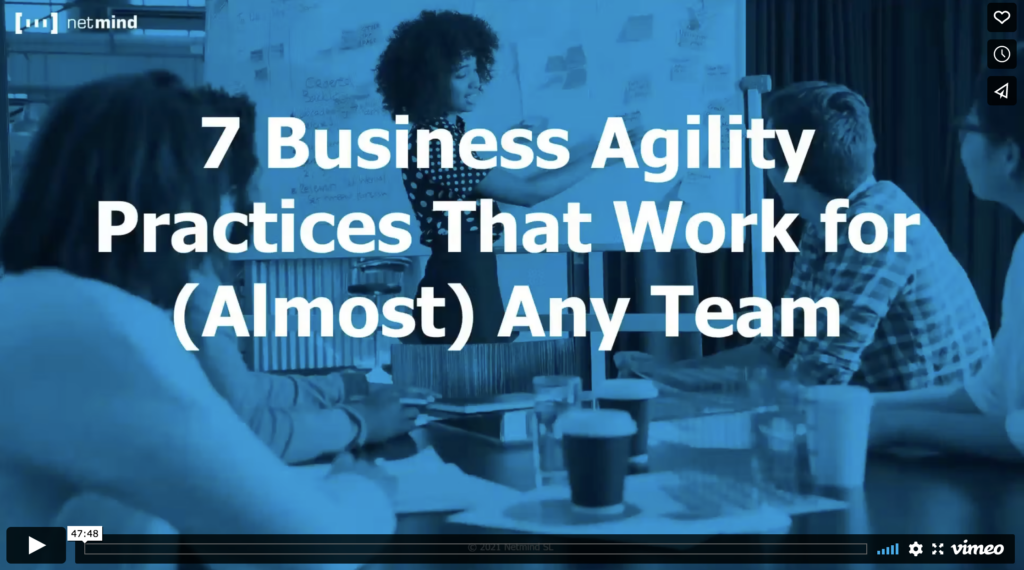7 Business Agility Practices That Work on (Almost) Any Team-EN
- Business Agility
- Infographic

Miquel Rodríguez
Oh, how I missed face-to-face conferences! The last conference I attended was Agile 2019 in Washington, pre-pandemic. Since then, Zoom has been our new home for meetups and conferences. That’s why I was really looking forward to attending Building Business Capability Conference in Miami (Florida), where I delivered a talk about Business Agility Practices That Work on (Almost) Any Team.
That was not the first time I delivered this talk. I’ve done it at Enterprise Agility World Conference 2021, Festival Agile Trends 2021, or in private events for our customers in Spanish or English indistinctly. However, it was the first time I had delivered it face to face, and I was really excited.
Is there a one-size-fits-all for Agile practices?
In this talk, I introduce 7 Business Agility Practices that, as the title suggests, can work well on almost any kind of team. They increase their productivity, improve their work, and help them become a more adaptive and high-performance team.
Why “almost”? Because each team is unique, the nature of their work is unique, their interactions are unique, and something that worked well in other environments may not work so well in others.
After briefly explaining the origin of Agile and how it became a worldwide movement that evolved to Agile at Scale and then to Business Agility, I suggest the following reflection:
What did we learn from Agile Software Development Teams that can be successfully applied to other kind of teams?
Nowadays, Agile is mainstream in Software Development teams. It’s working like a charm. So other teams of many different natures (Finance, Legal, HR, Marketing, …) tried to copy their practices. When we look at what Agile Teams are doing, we realize that the Top 5 most prevalent techniques are included in the Scrum framework.
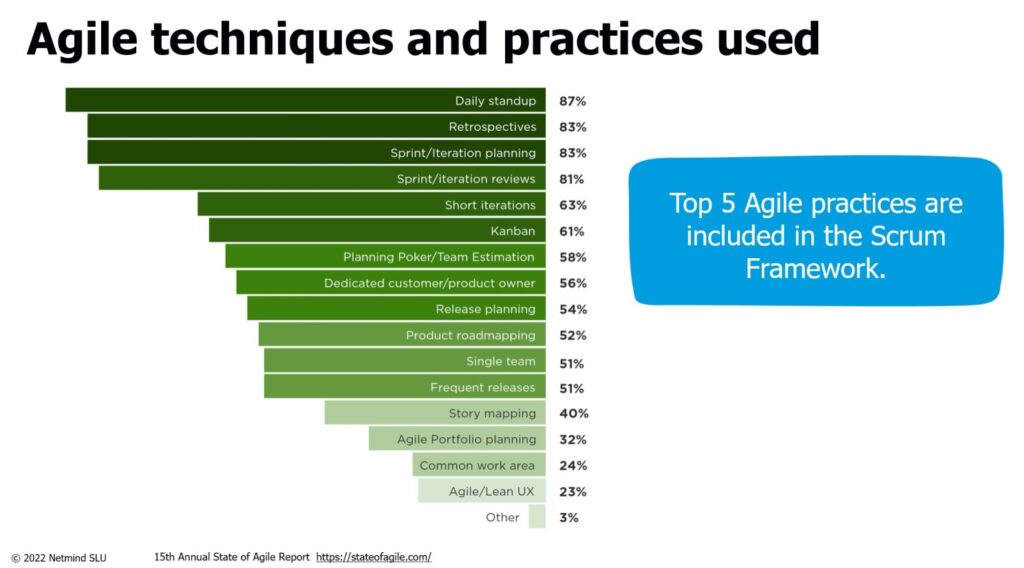
The Big Mistake About Agility and Scrum
Top 5 Agile practices are included in the Scrum framework. Scrum is, by far, the most popular approach to designing a team (roles, size, events, artifacts) and even his specific wording has become a standard de facto (Sprints, Product Owner, Scrum Master).
So if Scrum works great, let’s use Scrum in other teams! I’ve seen HR Scrum Teams, Sales Scrum Teams, Risks Scrum Teams, Legal Scrum Teams, …
This has been proven as a mistake.
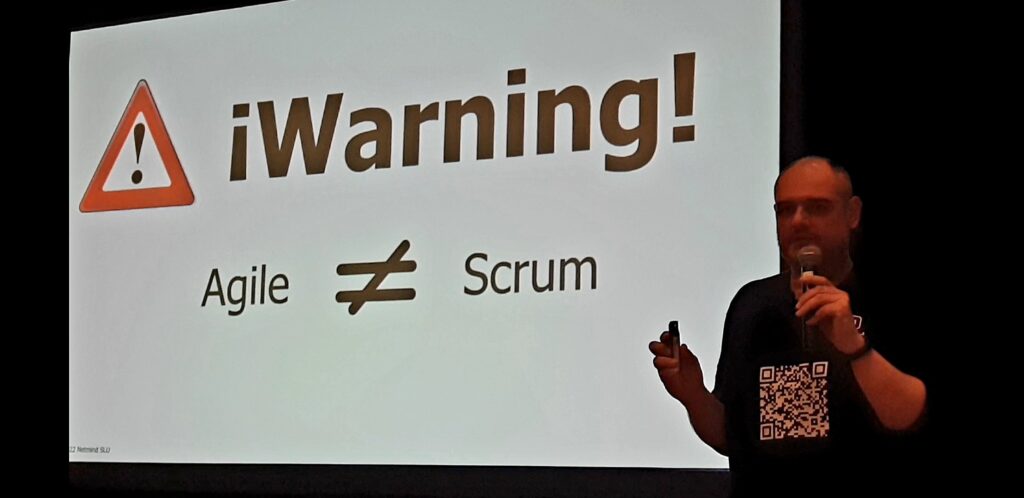
Please do not misunderstand me. I’m not saying that using Scrum is a mistake, that Scrum does not work, or that Scrum is not Agile. I’m saying that using Scrum in some contexts may not be the most appropriate way to improve the performance and effectiveness of a team, a business unit, or simply a group of people. Scrum needs to group people in teams of between 5-10 people, assign roles, work in iterations, and sometimes we forget the systemic consequences of those decisions.
The biggest mistake in agile transformations has been rushing to create Scrum teams throughout the organization without a systemic approach
So, what I suggest for this talk, is:
- Take a systemic approach before applying agile practices.
- Some practices have been proven to work better than others on many different teams. Even they are not so extended.
- Work not only at a team level but also at a coordination level between teams and value streams.
- An organizational learning mindset is critical for business agility.
The Seven Practices
These are the 7 Business Agility practices that I’ve seen successfully provide positive results on a wide range of different teams:
- Establish, normalize, visualize, and prioritize the flow of work
- Understand what our customers need
- Automate work
- Conduct Peer Reviews and Pairing / Mobbing
- Align Objectives (and measure them)
- Try new things!
- Establish Learning Cycles and Continuous Improvement
I want to point out that this selection has changed since I first delivered this talk 18 months ago, as we also learn and improve.
Organizational Learning and Business Agility
Practices are important to make a team improve. Trying new things and establishing learning cycles & continuous improvement (the last 2 practices) are key to learning fast and acting fast.
Business Agility requires the whole organization to learn fast and act fast.
Hope you enjoyed this summary of my talk! You can also download an infographic summarizing the session using this link.
Get your 7 Business Agility Practices Infographic
Building Business Capability is the only conference that provides insight into Business Analysis, Business Architecture, Business Process, Business Rules, Business Decisions, Business Strategy & Transformation, and Digital Innovation toward the pursuit of business excellence.
Netmind sponsored the BBC2022 edition that took place in Miami (Florida) in June 2022. For 5 days, more than 1.000 attendees enjoyed +80 sessions and workshops to improve their skills for business excellence.
In this edition Miquel Rodriguez delivered a talk “Business Agility Practices That Work on (Almost) Any Team”. Here you can download an infographic summarizing the session.
Download the infographic
Extra content: Video + Slides
For Business Agility to be truly effective, an organization must have a quality-oriented culture that collectively shapes what we do and how we do it. In other words, agile team practices have to spread to all areas of an organization. But it’s not easy to ensure that all teams work with common practices inspired by the Agile values and with a Lean mindset. This webinar outlines 7 Lean Agile practices that we believe are essential for (almost) any agile team – no matter if your team is in IT, HR, Marketing, Finance, or even Legal.
Sobre el autor


